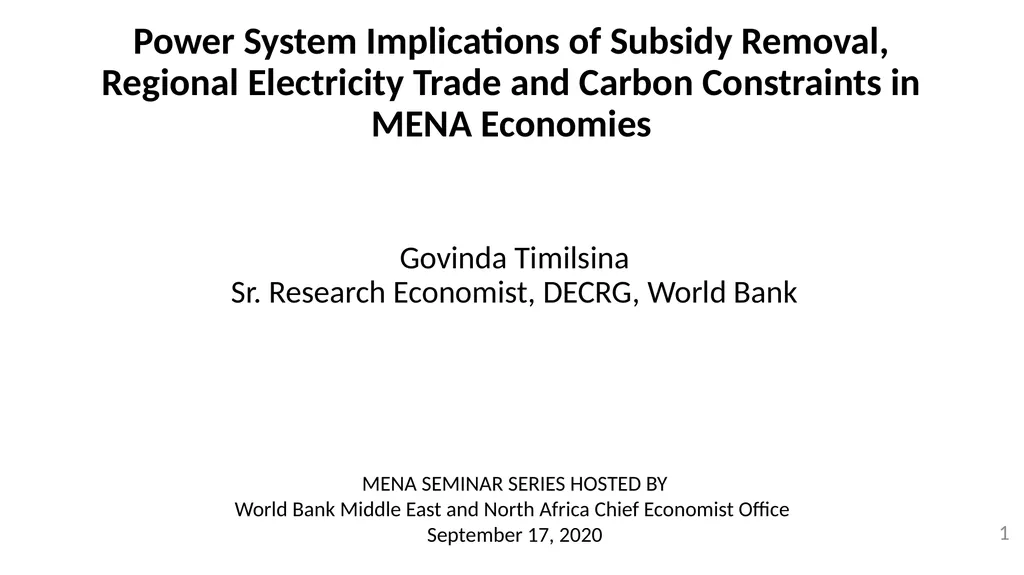
Power System Implications of Subsidy Removal,
Author: aaron | Published: 2025-05-24
Description: Power System Implications of Subsidy Removal, Regional Electricity Trade and Carbon Constraints in MENA Economies Govinda Timilsina Sr. Research Economist, DECRG, World Bank 1 MENA SEMINAR SERIES HOSTED BY World Bank Middle East and North
Download Presentation
Download the PPT/PDF: Download
Transcript:
Loading transcript…